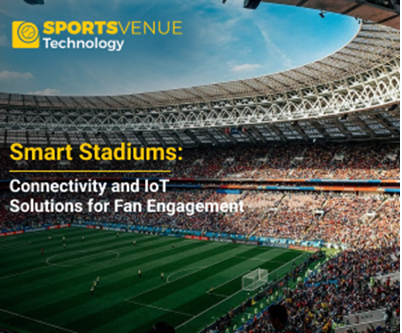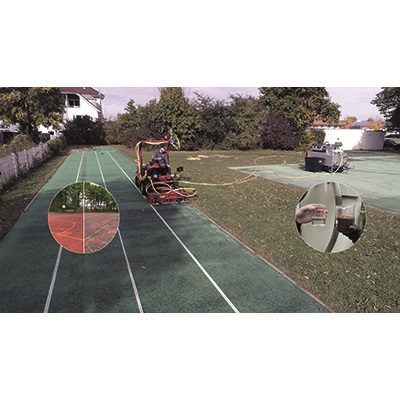Smart Stadiums: Connectivity and IoT Solutions for Fan Engagement

Introduction
Over the past few years, the sports industry has seen a significant shift towards digitalization, which has profoundly transformed the way fans experience games. Smart stadiums, equipped with cutting-edge connectivity and Internet of Things (IoT) solutions, have arisen as the next frontier in fan engagement. These technologically advanced venues not only elevate the in-game experience but also create fresh opportunities for teams and organizations to connect with their fan base. In this article, we will delve into how smart stadiums are utilizing connectivity and IoT solutions to revolutionize the way fans engage with sports events.
The Evolution of Fan Engagement
Traditionally, attending a sporting event meant being physically present in the stadium, watching the game unfold in real-time, and cheering for your favorite team alongside fellow fans. However, the landscape of fan engagement has evolved significantly in the digital age. Fans now expect more than just a seat in the stands; they crave an immersive and interactive experience.
This shift in expectations has prompted sports organizations to invest in technology that enhances fan engagement. Smart stadiums have become the answer to this challenge, offering a wide range of features and services that cater to the modern fan's desires.
| Read More: Enhancing Stadium Safety: Surveillance and Security Technologies |
Connectivity: The Backbone of Smart Stadiums
The foundation of a smart stadium's success lies in its connectivity infrastructure. High-speed, reliable Wi-Fi and cellular networks are essential components that enable fans to stay connected throughout the game. Whether they want to share a selfie on social media, check real-time game statistics, or order concessions from their seats, a robust network is crucial.
Wi-Fi Networks: Smart stadiums are equipped with Wi-Fi networks that provide seamless connectivity to thousands of fans simultaneously. This enables fans to access various digital services, such as mobile apps, live streaming, and interactive games, without interruption.
5G Technology: The introduction of 5G technology has had a transformative impact on smart stadiums. Thanks to its lightning-fast speeds and minimal latency, 5G enables fans to immerse themselves in real-time augmented reality (AR) experiences and enjoy high-definition video streaming like never before.
Mobile Apps: Sports teams and venues have developed dedicated mobile apps that provide fans with a personalized and interactive experience. These apps offer features like mobile ticketing, in-seat food ordering, live game commentary, and even virtual reality (VR) experiences.
Beacon Technology: Beacons placed strategically throughout the stadium can send location-based notifications to fans' smartphones. For example, fans can receive discounts on merchandise or food when they are near a specific concession stand.
| Also Read: 5G Connectivity in Sports Venues: Revolutionizing the Fan Experienc |
IoT Solutions Enhancing Fan Engagement
IoT technology plays a pivotal role in elevating fan engagement within smart stadiums. By integrating various IoT devices and sensors, venues can collect data, automate processes, and provide fans with unique experiences.
Smart Ticketing: IoT-enabled ticketing systems simplify the entry process for fans. Instead of traditional paper tickets, fans can use electronic tickets on their smartphones, granting them easy access to the stadium. This not only reduces queues but also offers a contactless solution in the era of COVID-19.
Smart Seating: IoT sensors in seats can provide real-time data on seat availability, helping fans find vacant seats during the game. Additionally, smart seats can be equipped with haptic feedback technology, enhancing the fan's sensory experience by vibrating during significant game moments like goals or touchdowns.
Smart Concessions: Internet of Things (IoT) integrated vending machines and kiosks have the potential to optimize the food and beverage ordering procedure. Fans have the convenience of placing orders via mobile apps and receiving notifications when their items are prepared for pickup, effectively minimizing wait times and guaranteeing a smooth and efficient experience.
Stadium Security: IoT-based security systems, including facial recognition and video analytics, enhance security while maintaining a fan-friendly atmosphere. Fans can enter the stadium without the hassle of physical tickets, and potential threats can be detected quickly.
Environmental Monitoring: Smart stadiums are also becoming environmentally conscious. IoT sensors can monitor energy usage, waste management, and water consumption, helping venues reduce their environmental footprint and engage fans in sustainability efforts.
Enhancing the Fan Experience
The primary goal of smart stadiums is to enhance the fan experience, making it more enjoyable, interactive, and immersive. Here are some ways in which these venues achieve that objective:
Augmented Reality (AR) and Virtual Reality (VR): AR and VR technologies are integrated into smart stadium experiences, allowing fans to enjoy immersive content. For example, fans can use AR apps to access player stats by simply pointing their smartphones at the field. VR experiences can transport fans to the best seats in the house, even if they're sitting in the upper deck.
Interactive Displays: Smart stadiums feature interactive displays and video walls that provide real-time statistics, replays, and dynamic content. Fans can engage with these displays to dive deeper into the game and enjoy a more immersive experience.
Gamification: Sports teams have embraced gamification as a way to engage fans. Through mobile apps, fans can participate in quizzes, polls, and challenges related to the game. Prizes and rewards add an element of competition and excitement to the experience.
Personalized Content: Smart stadiums use data analytics to deliver personalized content to fans. For example, the stadium app can recommend concessions based on a fan's previous food choices or offer merchandise discounts for their favorite team.
Fan-Centric Analytics: IoT solutions collect data on fan behavior, preferences, and interactions. Sports organizations can use this data to gain insights into their fan base and tailor marketing strategies to better engage their audience.
Social Media Integration: Smart stadiums harness the power of social media platforms to foster a sense of community among fans. Utilizing live polls, instant updates, and interactive fan engagement campaigns, they inspire fans to actively share their experiences on social media, effectively broadening the event's reach and impact.
Monetizing Fan Engagement
Beyond enhancing the fan experience, smart stadiums provide sports organizations with new revenue streams and monetization opportunities.
Sponsorship and Advertising: With digital displays, interactive content, and targeted advertising, smart stadiums offer attractive sponsorship opportunities for brands. Advertisers can engage fans through personalized content and interactive campaigns.
Data Monetization: The data collected from IoT devices can be a valuable asset. Sports organizations can monetize this data by selling insights and analytics to sponsors, advertisers, and third-party businesses looking to understand fan behavior.
Premium Experiences: Smart stadiums often offer premium experiences, such as exclusive lounges, VIP packages, and luxury seating. These high-end offerings provide additional revenue streams and cater to fans looking for an elevated experience.
Merchandise and Concessions: IoT solutions simplify the process of purchasing merchandise and concessions, enhancing the overall fan experience. This added convenience has the potential to drive up sales and revenue for the venue.
Challenges and Considerations
While smart stadiums hold tremendous promise for fan engagement and revenue generation, they also come with challenges and considerations:
Data Privacy and Security: Collecting and storing fan data requires stringent security measures to protect personal information. Ensuring compliance with data privacy regulations is crucial.
Infrastructure Costs: Building and maintaining a smart stadium with advanced connectivity and IoT capabilities can be expensive. Sports organizations need to weigh the initial investment against the potential long-term benefits.
Accessibility: Not all fans may have access to the latest smartphones or may be comfortable using mobile apps. Smart stadiums should consider the needs of all fans, including those who prefer traditional methods of engagement.
Overstimulation: Too much technology can overwhelm fans. Striking the right balance between enhancing the fan experience and not detracting from the live game can be challenging.
Conclusion
Smart stadiums represent the future of fan engagement in the sports industry. By leveraging cutting-edge connectivity and IoT solutions, these venues offer fans an immersive and interactive experience that goes beyond the traditional live game. From augmented reality and personalized content to streamlined services and monetization opportunities, smart stadiums are changing the way fans experience sports.
As technology continues to advance, smart stadiums will evolve, offering even more innovative ways to engage fans and drive revenue for sports organizations. Whether you're a die-hard sports enthusiast or a casual fan, the rise of smart stadiums is transforming the game-day experience, ensuring that attending a live sporting event is an unforgettable and technologically advanced adventure.





